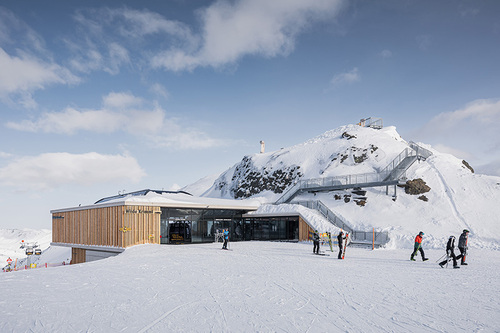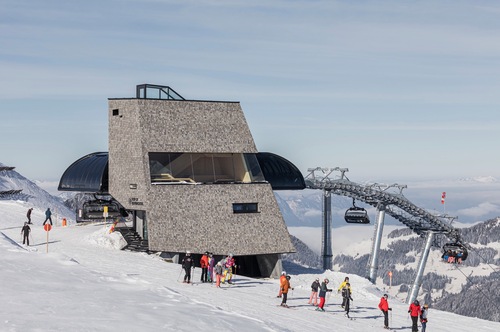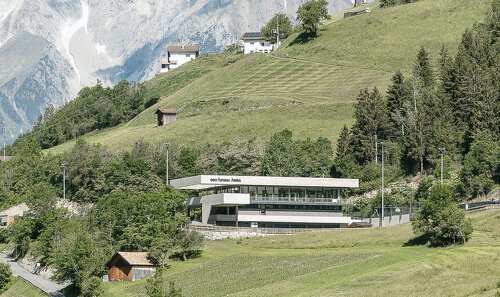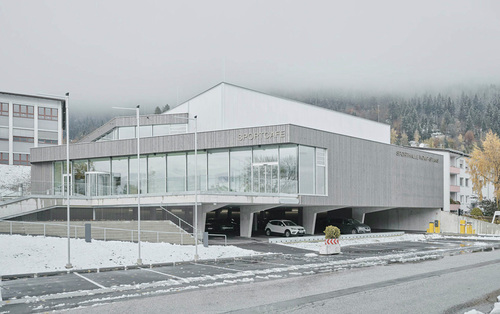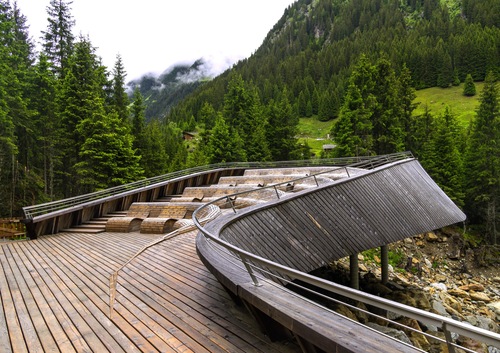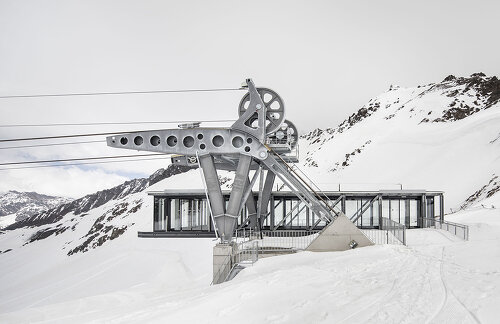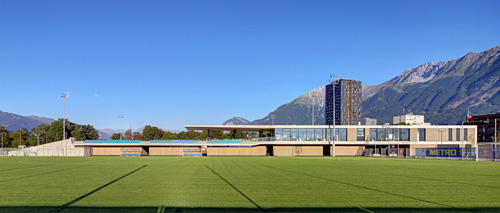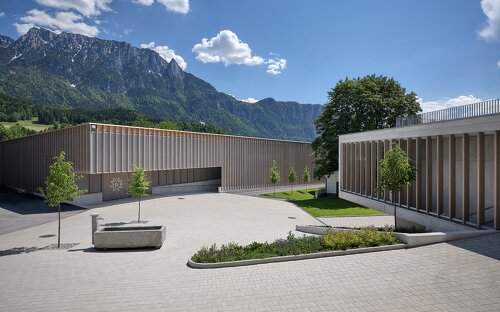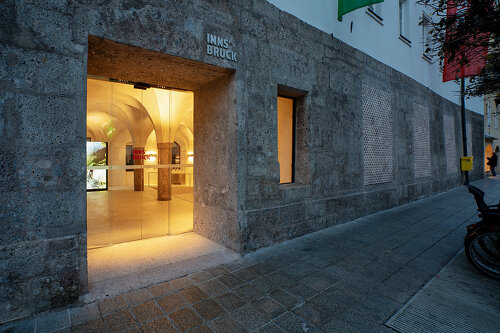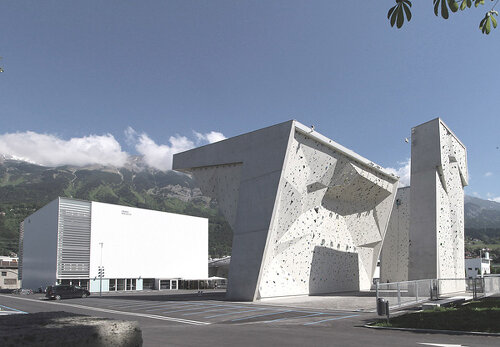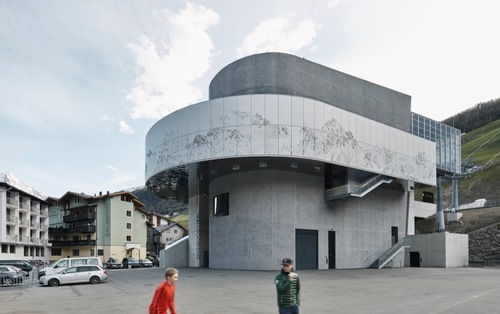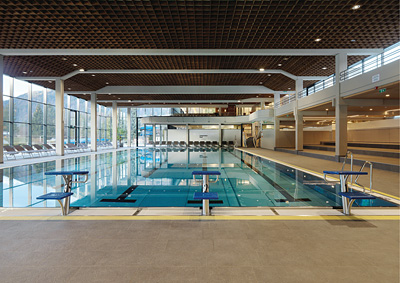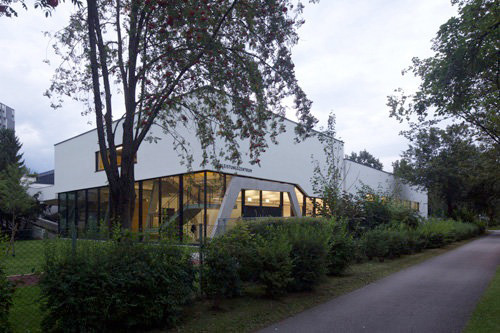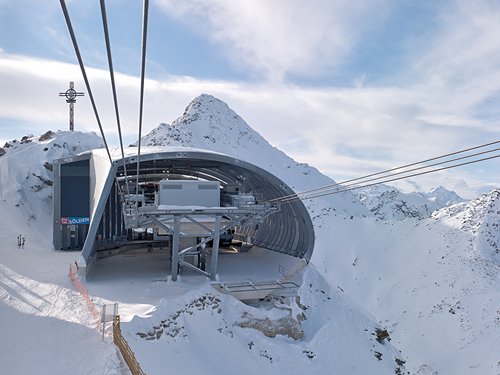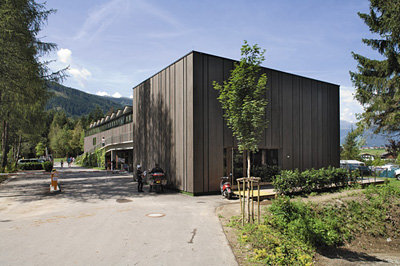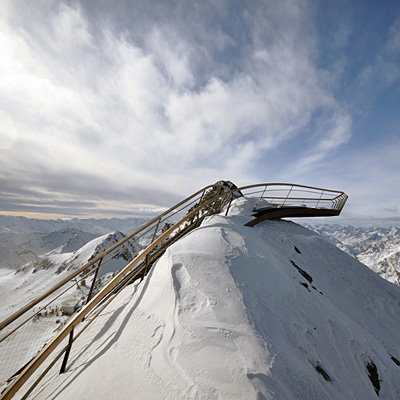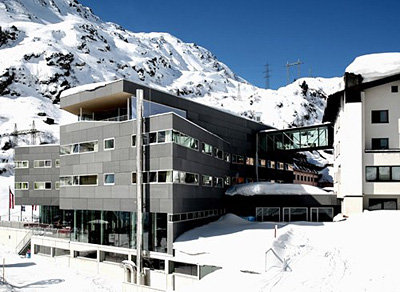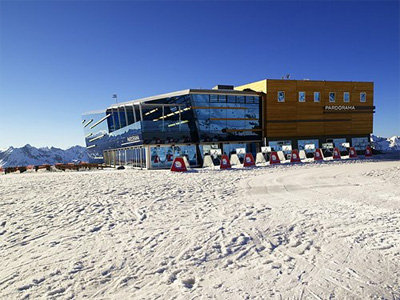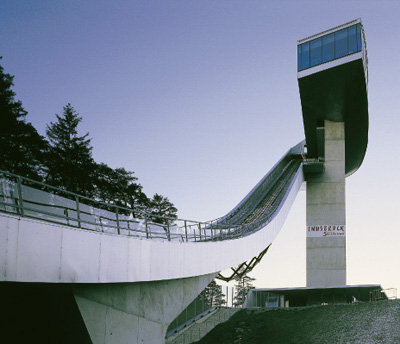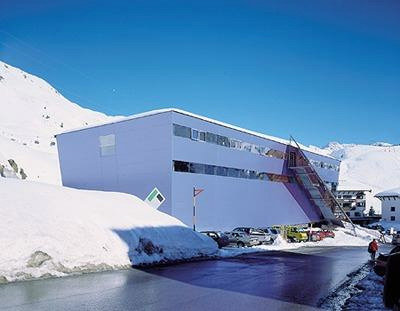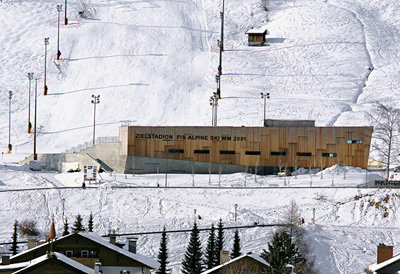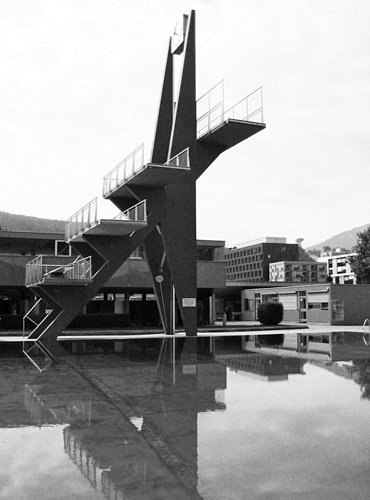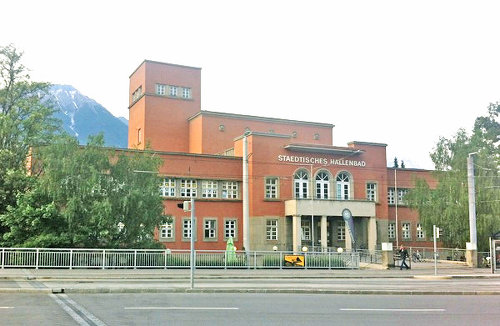Lift stations "Wilde Krimml" and "Kapauns"
Architecture: Snøhetta Studio Innsbruck (2022-2023) Builder-owner: Zeller Bergbahnen Zillertal GmbH & Co KG Accessibility: The two mountain railways are only in operation during the winter season. TIP: Around the platform are three sculptures by the Tyrolean sculptor Magnus Pöhacker.
As part of a renovation process, the lift stations for the Kapauns chairlift and the Wilde Krimml gondola lift, which lead to the Übergangsjoch, were also rebuilt. The guiding principle behind the design was to integrate the technically complex structures into the alpine landscape as sensitively as possible. From the two mountain stations, designed as pavilion-like structures, a steel staircase leads to the viewing platform "Die lange Bank” (The Long Bench), also designed by Snøhetta.


